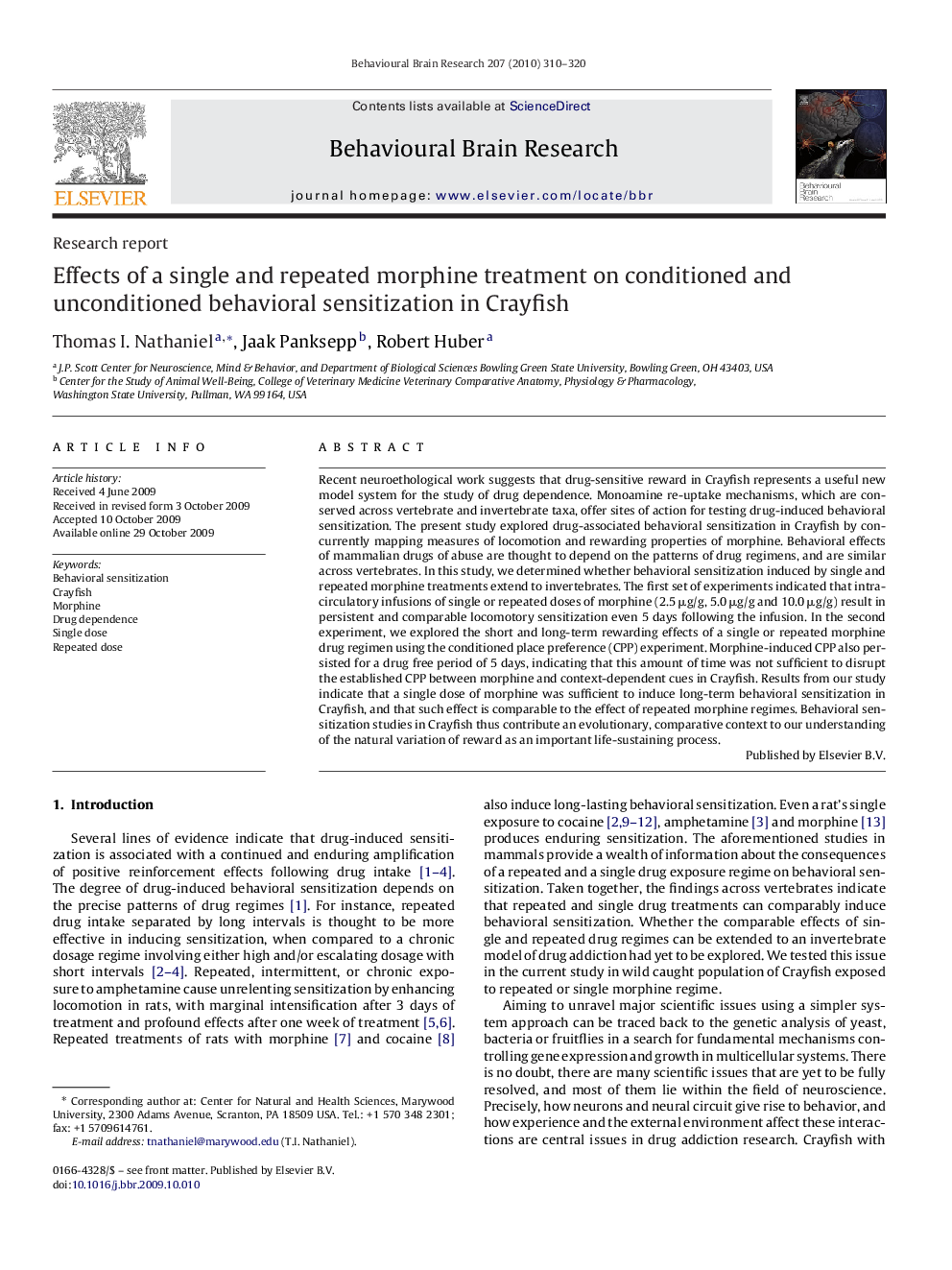| Article ID | Journal | Published Year | Pages | File Type |
|---|---|---|---|---|
| 4314472 | Behavioural Brain Research | 2010 | 11 Pages |
Recent neuroethological work suggests that drug-sensitive reward in Crayfish represents a useful new model system for the study of drug dependence. Monoamine re-uptake mechanisms, which are conserved across vertebrate and invertebrate taxa, offer sites of action for testing drug-induced behavioral sensitization. The present study explored drug-associated behavioral sensitization in Crayfish by concurrently mapping measures of locomotion and rewarding properties of morphine. Behavioral effects of mammalian drugs of abuse are thought to depend on the patterns of drug regimens, and are similar across vertebrates. In this study, we determined whether behavioral sensitization induced by single and repeated morphine treatments extend to invertebrates. The first set of experiments indicated that intra-circulatory infusions of single or repeated doses of morphine (2.5 μg/g, 5.0 μg/g and 10.0 μg/g) result in persistent and comparable locomotory sensitization even 5 days following the infusion. In the second experiment, we explored the short and long-term rewarding effects of a single or repeated morphine drug regimen using the conditioned place preference (CPP) experiment. Morphine-induced CPP also persisted for a drug free period of 5 days, indicating that this amount of time was not sufficient to disrupt the established CPP between morphine and context-dependent cues in Crayfish. Results from our study indicate that a single dose of morphine was sufficient to induce long-term behavioral sensitization in Crayfish, and that such effect is comparable to the effect of repeated morphine regimes. Behavioral sensitization studies in Crayfish thus contribute an evolutionary, comparative context to our understanding of the natural variation of reward as an important life-sustaining process.
